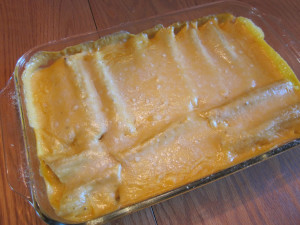“It was pretty clear, the food you eat every day is the most important food. This is what we do at Zuni.”
Judy Rogers
 Judy Rogers, co owner and head chef at San Francisco famed Zuni Cafe, died at the age of 57, earlier this week from complications associated with Appendix cancer. If you never heard of Judy Rogers or were not fortunate enough to own a copy of her “Zuni Cafe Cookbook” you have really missed out.
Judy Rogers, co owner and head chef at San Francisco famed Zuni Cafe, died at the age of 57, earlier this week from complications associated with Appendix cancer. If you never heard of Judy Rogers or were not fortunate enough to own a copy of her “Zuni Cafe Cookbook” you have really missed out.
In the above quote Ms. Rogers is referring to her earliest influences while living with a family of renowned chefs in France as a 16 year old exchange student. This chance occurrence started her on a career devoted to taste, cooking and the simple enjoyment of food.
Ms. Rogers’s cooking over years was renowned for its simple ingredients and the use of locally grown products. Not considered a trend setter, but if you ask me this idea of simplicity, combined with a rustic local flavor is where the food industry seems to be at in recent years. Take a look at the rise in community Farmers Markets.
Much of the influences and food styles that Ms. Rogers favored can be, in my opinion, considered Mediterranean or old school, old world cuisine. Her signature dish Zuni Roasted Chicken with Bread Salad speaks directly to this style.
Her recipes and cook book will serve as a lasting tribute and her influence on American cuisine and the American Restaurant scene will forever be felt through her style which can be described as simplicity through precision.
Below is the recipe for Zuni Roasted Chicken, as seen in “The Smitten Kitchen” blog and adapted from the cookbook the Zuni Cafe, San Francisco . Do yourself a favor and make this dish, along with the bread salad, as soon as possible.
 Zuni Cafe’s Roasted Chicken:
Zuni Cafe’s Roasted Chicken:
- One small chicken, 2 3/4 to 3 1/2-pounds
- 4 tender sprigs fresh thyme
- marjoram, rosemary or sage, about 1/2 inch long
- 3/4 teaspoon salt
- 3/4 to 1 teaspoon freshly cracked black pepper
- A little water
Remove and discard the lump of fat inside the chicken. Rinse the chicken and pat very dry inside and out. Be thorough — a wet chicken will spend too much time steaming before it begins to turn golden brown.
Approaching from the edge of the cavity, slide a finger under the skin of each of the breasts, making 2 little pockets. Now use the tip of your finger to gently loosen a pocket of skin on the outside of the thickest section of each thigh. Using your finger, shove an herb sprig into each of the 4 pockets.
Season the chicken liberally all over with salt and pepper. Season the thick sections a little more heavily than the skinny ankles and wings. Sprinkle a little of the salt just inside the cavity, on the backbone, but don’t otherwise worry about seasoning the inside. Twist and tuck the wing tips behind the shoulders. Cover loosely and refrigerate.
Prepare your oven and pan: [Day of, total time is 45 minutes to 1 hour]
Preheat the oven to 475°F. Choose a shallow flameproof roasting pan or dish barely larger than the chicken, or use a 10-inch skillet with an all-metal handle (we used a 12-inch cast iron frying pan for a 3 1/2 pound chicken). Preheat the pan over medium heat. Wipe the chicken dry and set it breast side up in the pan. It should sizzle.
Roast the chicken: Place the chicken in the pan in the center of the oven and listen and watch for it to start browning within 20 minutes. If it doesn’t, raise the temperature progressively until it does. The skin should blister, but if the chicken begins to char, or the fat is smoking, reduce temperature by 25 degrees. After about 30 minutes, turn the bird over — drying the bird and preheating the pan should keep the skin from sticking. Roast for another 10 to 20 minutes, depending on size, then flip back over to recrisp the breast skin, another 5 to 10 minutes.
Rest the chicken: Remove the chicken from the oven and turn off the heat. Lift the chicken from the roasting pan and set on a plate. Carefully pour the clear fat from the roasting pan, leaving the lean drippings behind. Add about a tablespoon of water to the hot pan and swirl it.
Slash the stretched skin between the thighs and breasts of the chicken, then tilt the bird and plate over the roasting pan to drain the juice into the drippings. You can let it rest while you finish your side dishes (or Bread Salad, below). The meat will become more tender and uniformly succulent as it cools.
Serve the chicken: Set a platter in the oven to warm for a minute or two. Tilt the roasting pan and skim the last of the fat. Place over medium-low heat, add any juice that has collected under the chicken, and bring to a simmer. Stir and scrape to soften any hard golden drippings. Taste — the juices will be extremely flavorful.
Cut the chicken into pieces, spread on the warm platter (on top of the Bread Salad, if using).
 Zuni Cafe Bread Salad
Zuni Cafe Bread Salad
Adapted from the Zuni Cafe, San Francisco
- Generous 8 ounces slightly stale open-crumbed, chewy, peasant-style bread (not sourdough)
- 6 to 8 tablespoons mild-tasting olive oil
- 1 1/2 tablespoons Champagne vinegar or white wine vinegar
- Salt and freshly cracked black pepper
- 1 tablespoon dried currants plumped in 1 tablespoon red wine vinegar and 1 tablespoon warm water for ten minutes or so
- 2 tablespoons pine nuts
- 2 to 3 garlic cloves, slivered
- 1/4 cup slivered scallions (about 4 scallions), including a little of the green part
- 2 tablespoons lightly salted chicken stock or lightly salted water
- A few handfuls of arugula, frisée, or red mustard greens, carefully washed and dried
Preheat the broiler. Carve off all of the bottom and most of the top and side crusts from your bread (you can reserve these to use as croutons for soup or another salad). Tear bread into irregular 2- to 3-inch chunks, wads, bite-sized bits and fat crumbs. You should get about 4 cups.
Toss them with just a tablespoon or two of olive oil, lightly coating them, and broil them very briefly, just to lightly color the edges. If you’d like to toast the pine nuts (recommended) you can put them on your broiler tray as well, but watch them very carefully — they cook quickly!
Combine about 1/4 cup of the olive oil with the Champagne or white wine vinegar and salt and pepper to taste. Toss about 1/4 cup of this tart vinaigrette with the torn bread in a wide salad bowl; the bread will be unevenly dressed. Taste one of the more saturated pieces. If it is bland, add a little salt and pepper and toss again.
Heat a spoonful of the olive oil in a small skillet, add the garlic and scallions, and cook over medium-low heat, stirring constantly, until softened. Don’t let them color. Scrape into the bread and fold to combine. Drain the plumped currants and fold them in, along with the pine nuts, if they were not already mixed with the bread scraps from the broiling step. Dribble the chicken stock or lightly salted water over the salad and fold again.
Taste a few pieces of bread — a fairly saturated one and a dryish one. If it is bland, add salt, pepper, and/or a few drops of vinegar, then toss well.
If you’re going to serve the salad under the roast chicken (recipe above), you can pile the bread salad on the serving dish you want to use and tent it with foil. If you want to serve it separately, do the same, but in a 1-quart shallow baking dish. Hang onto the bowl you mixed it in — you’ll use it again.
Place the salad in the oven after you flip the chicken the final time, for about 5 to 10 minutes.
Tip the bread salad back into the salad bowl. It will be steamy-hot, a mixture of soft, moist wads, crispy-on-the-outside-but-moist-in-the-middle-wads, and a few downright crispy ones. Drizzle and toss with a spoonful of the pan juices. Add the greens, a drizzle of vinaigrette, and fold well. Taste again.
 With “Gracie’s Christmas Eve Recipe Book – Night of the Seven Fishes ,” we share with you some fantastic seafood selections, that are good not only on the holiday but year round. We also talk about some wonderful memories of how we made the Night of Seven Fishes special.”
With “Gracie’s Christmas Eve Recipe Book – Night of the Seven Fishes ,” we share with you some fantastic seafood selections, that are good not only on the holiday but year round. We also talk about some wonderful memories of how we made the Night of Seven Fishes special.”














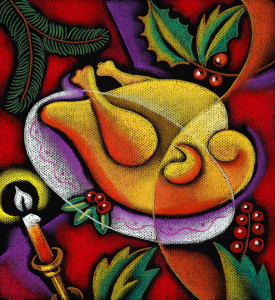


















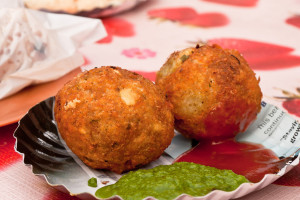
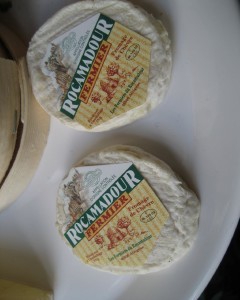
















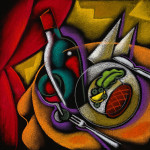








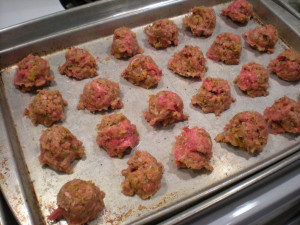
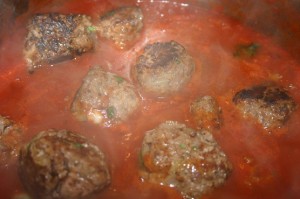
 For best results with all your cooking needs be sure to visit
For best results with all your cooking needs be sure to visit 





